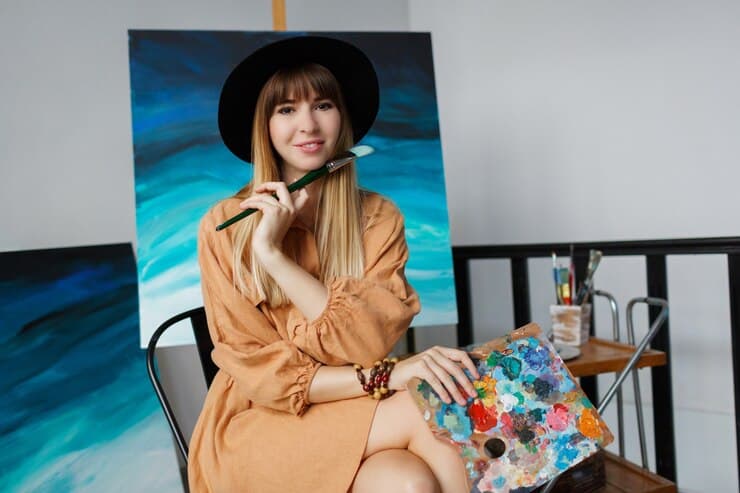For every aspiring artist, the quest to find a distinctive art style can be both daunting and liberating. If you’ve ever yearned to unlock your unique creative expression but felt lost in the process, fear not. In this guide, we’ll navigate the steps together, leading you to discover your art style within a week. Let’s embark on this transformative journey and sculpt your artistic identity.
Step 1: Discovering Inspirational Artists
Begin by immersing yourself in the art world and selecting artists who resonate with you. Whether you prefer digital or traditional mediums, the key is to connect emotionally with the artwork. Take your time to choose inspirations that evoke positive emotions and align with your artistic aspirations.
Explore the artwork of your chosen artists and make notes on what triggers positive emotions. Understanding why you love a piece will guide you in the later stages of finding your unique style. Consider aspects like color, detail, and overall aesthetic appeal.
Delve into considerations such as the level of detail, focus areas, and color preferences. Recognize what truly makes you happy in your artistic journey, paving the way for a style that reflects your genuine passion.
Step 2: Selecting Key Art Pieces
Handpick a selection of your favorite pieces from the chosen artists. Take your time in choosing, as these will serve as the foundation for crafting your own style. Consider what specific elements draw you to each piece and make notes for future reference.
Dig deeper into the aesthetics that resonate with you the most. Analyze line art, color schemes, and unique features that stand out. These insights will be instrumental in shaping your individual artistic style.
Step 3: Crafting Your Unique Style
Carefully examine each selected piece to determine your preferred line art style. Consider the intricacies of each and choose the one that aligns most closely with your vision. Separate this chosen style from the others for further refinement.
Explore the remaining pieces to identify your preferred coloring style. Embrace the colors that feel most authentic to you. Avoid overthinking; trust your instincts and choose what brings you comfort and joy.
Inspect the final artwork and pinpoint one element that captivates you beyond line art and coloring. Whether it’s the addition of details or a unique highlight, this element will contribute to the individuality of your art style.
Enhance your foundational drawing skills with this guide Art Step by Step: Unveiling the Frontal Face Drawing Mastery
Step 4: Bringing It All Together
Now is the time to merge your chosen elements – line art, coloring style, and finishing touches. Create a cohesive vision that reflects your unique artistic voice. Trust the natural flow of your inspiration as you assemble these components.
Initially, draw inspiration directly from your chosen pieces, gradually reducing reliance. After a few days, let your intuition guide your hand, creating art that is uniquely yours. Witness the evolution from reference to originality, and embrace the newfound authenticity in your work.
Step 5: Evolution and Adaptation
As you delve deeper into your artistic journey, be open to evolution. Recognize that artistic styles can evolve over time, reflecting your growth and experiences. Embrace change as a natural part of your creative process, and allow your style to adapt organically.
Continuously fine-tune your art style as you gain more experience. Experiment with variations, explore new techniques, and refine elements that resonate with you. This ongoing refinement ensures that your style remains a true representation of your artistic identity.
Discover how to find your style in this video
Step 6: Overcoming Challenges
It’s normal to face creative blocks along the way. When encountering challenges, take a step back, breathe, and revisit your inspirations. Analyze what initially drew you to art and reconnect with the positive emotions that sparked your creative journey.
Don’t limit your artistic exploration to your established style. Seek inspiration from various sources, artists, and genres. This broadens your creative perspective and introduces new elements that may enhance or reshape your artistic expression.
Step 7: Building a Consistent Portfolio
As your unique art style solidifies, focus on building a consistent portfolio. Showcase a range of pieces that highlight the diversity within your chosen style. A cohesive body of work not only enhances your personal brand but also captivates a broader audience.
Consider incorporating a signature element into your artwork. Whether it’s a specific motif, color scheme, or thematic focus, a signature touch adds a memorable and recognizable aspect to your creations. This contributes to the distinctiveness of your art style.
Illuminate your imagination with the captivating realm of art that glows here Glowing Art: Illuminating the World with Creativity
Step 8: Sharing and Receiving Feedback
Now that you’ve honed your art style, share your creations with the world. Utilize social media platforms, art communities, and online galleries to showcase your work. Building an online presence allows your unique style to reach a wider audience.
Welcome constructive feedback as a tool for growth. Engage with fellow artists and enthusiasts, and be open to suggestions. Constructive criticism provides valuable insights that can further refine your art style and elevate your skills.
Conclusion
As you navigate the labyrinth of finding your art style, remember that it’s a dynamic and personal journey. Embrace the evolution of your style, overcome challenges with resilience, and celebrate the uniqueness that sets your artwork apart. Your art style is a testament to your creative voice, and as you continue to create, refine, and share, you contribute to the vibrant tapestry of the artistic world.
